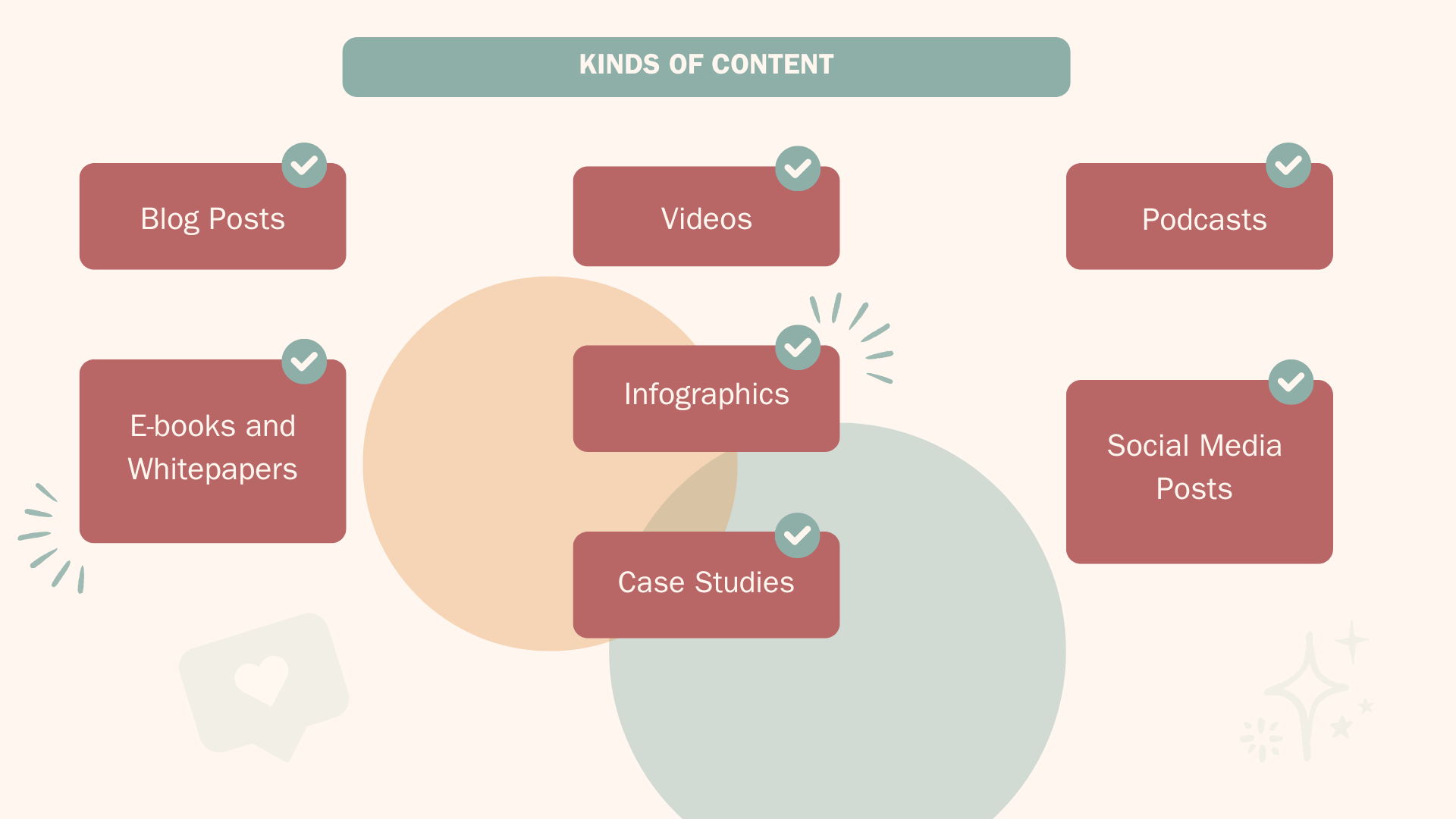Content Marketing vs Social Media Marketing: Key Differences
Though just 30% of brands know their target audiences, 70% of them invest in content marketing. This figure reveals the complexity of online marketing.
Introduction
As digital marketing becomes more complex, differentiating content marketing vs social media marketing is essential for planning.
Understanding Social Media Marketing
SMM helps to increase brand awareness, boost sales, and communicate with existing customers using a variety of social media channels. This includes developing and posting content on social media networks to promote a brand.
Definition and Purpose
Aimed at engaging followers and expanding a community, key components of social media marketing strategies include posts, stories, live videos, and adverts.
The major goals of SMM are more involvement with new customers, website traffic increase, and a community around the brand development.
Key Platforms for Social Media Marketing
SMM relies on many platforms with various involvement options, that allow choosing the right platform for your content marketing.

Facebook – 77%
With over 2.9 billion active users every month, Facebook leads organic and paid communication.
- Features: Business Pages, Ads Manager, Facebook Groups, Marketplace.
-
Strengths: Broad reach, sophisticated targeting choices, and several content formats.
YouTube – 65%
This platform has more than 2.5 billion active viewers each month, making it the most well-known video app.
- Features: Channels, Playlists, YouTube Ads, YouTube Shorts.
-
Strengths: Extensive reach, video marketing, in-depth analytics.
Instagram – 56%
Instagram is ideal for companies trying to highlight items via striking photographs and videos, since it is visually oriented. It works well for both social media vs content marketing.
- Features: Stories, Reels, IGTV, Business Profiles.
-
Strengths: High involvement rates, chances for influencer collaboration, great visual appeal.
TikTok – 45%
With over 1 billion monthly active users, TikTok has become quickly well-known, particularly among younger viewers.
- Features: A short-form video platform known for viral trends, challenges, and creativity.Key Features: Short videos, music integration, filters, effects, duets.
-
Strengths: Paid advertising, cost-effective, high engagement rates, user-generated content, combining content marketing with influencer partnerships.
Twitter – 32%
This platform is great for posting updates in real time and sending short texts to followers to interact with them.
- Features: Tweets, Threads, Spaces, Ads.
-
Strengths: Instant involvement, current topics, good for updates, and customer service.
LinkedIn – 20%
LinkedIn is the preferred tool for professional networking and specific material best for B2B marketing.
- Features: Company Pages, LinkedIn Ads, Sponsored Content, LinkedIn Groups.
- Strengths: B2B marketing, professional networking, opportunities for thought leadership.
These platforms offer diverse ways for brands to communicate with their audience.
Main Benefits and Best Practices in Social Media
SMM paid advertising gives companies a stage on which to engage directly with their consumers, therefore strengthening ties and promoting communication.

Businesses can get more attention and reach more people by sharing useful and interesting content regularly.
Any business, no matter the size, can use social media to promote itself, as advertising costs are often lower than traditional marketing.
Best Practices:
- Maintain Consistency
Regularly posting content helps keep the audience engaged and informed while reinforcing brand identity.
- Use valuable content
Incorporating images and videos can significantly increase engagement and make posts more attractive and shareable.
- Engage with Followers
Responding to comments and messages fosters a sense of community and loyalty building trust among followers.
- Monitor Analytics
Regularly evaluating social media success analytics helps firms understand consumer tastes and guide strategy.
Content Marketing and Key Features
Content marketing is a tactic used to produce and present relevant and valuable content that attracts a target audience, consequently motivating profitable sales.
The fundamental components of a content marketing strategy are blog articles, video content, podcasts, and other interesting materials.
Content Types

Content marketing encompasses various formats that aim to engage and inform specific audiences. Here are some key types:
- Videos
Engaging visual content ranging from educational tutorials to brand stories effectively captures attention and conveys messages quickly.
- Social Media Posts
Interesting topical materials can be published on various platforms, increasing the reach with photos, gifs, etc. These networks are equally well suited for social media marketing vs. content marketing.
- Podcasts
Audio content appealing to people who would rather listen than read lets companies engage in debates, interviews, or stories.
- Case Studies
Thorough studies of effective initiatives or client experiences demonstrating value and building brand reputation.
- Blog Posts
Content marketing builds authority through authoritative, useful, and educational articles. Brands can share tips, answer frequently asked questions, or share important industry news.
Combining these content can help companies properly reach and connect with their audiences, thus improving their whole marketing plan.
Goals of Content Marketing
Content marketing tries to create leads, develop authority, trust, and reputation by means of useful material. The foundation of this method is giving the viewer useful and engaging knowledge.

Key Differences Between Social Media and Content Marketing
So, which is better: content marketing vs social media? It’s not about better or worse, they just work differently.
- Platform Focus
Content marketing is mainly focused on the business website. It is here that useful articles and information are published.
- Content Longevity
While social media content is generally transient and meant for quick consumption, content marketing usually entails creating long-form, evergreen material that stays relevant over time.
- Audience Interaction
Each tactic interacts with the audience differently; content marketing seeks to enlighten and educate, while social media marketing promotes direct involvement and conversation, which builds a more personal relationship.
- Measurement of Success
While social media marketers analyze success by likes, comments, and general brand engagement and rates, content marketing generally tracks website traffic, lead generation, and interaction time.
Primary Goals
Social media marketing vs content marketing targets are similar, but companies utilize different strategies to achieve them.
- Increase brand awareness;
- Expand audience, build brand reputation;
- Build a loyal community around the brand;
- Boost sales and achieve other strategic goals.
Content marketing engages customers by providing useful and relevant content based on the brand’s expertise and reputation.
Social media marketing promotes brand exposure, popularity, and online resource traffic.
Distribution Channels
Both types of marketing use various routes to spread information, but they also use common ones.
- Site and Blog
A brand’s website centralizes blog entries and resources, making them easy to access and link to. This builds authority and SEO traffic.
- Content Syndication
Republishing information on different platforms may improve visibility and authority by reaching new audiences.
- Podcast Directories
- SMM
- Email Marketing
- Paid Ad
Brands can improve content marketing, exposure, and engagement by carefully using these distribution platforms.
Consumer Interaction
Understanding audience behavior helps improve SMM and content marketing. Below is a structured comparison of how each strategy affects the audience:
Content Marketing
-
Focuses on deep content, developing long-term partnerships.
- Allows audiences to consume information at their own pace through articles, e-books, and videos.
- Provides trustworthy information that establishes authority and trust.
- Feedback Mechanism often indirect. Time spent on sites and content sharing provides feedback, not quick comments.
-
Call to Action is usually subtler. May involve directing readers to relevant information rather than purchasing.

Social Media Marketing
-
Gives quick interactions and chats on sites such as Twitter, Facebook, and Instagram top priority.
- Uses brief forms of content like Reels, stories, and posts for quick consumption.
- Direct messages, likes, shares, and comments provide instantaneous feedback that helps to foster conversation.
-
Often include direct calls to action meant to inspire quick reactions or purchases, such “Buy Now” or “Sign Up Today.”
Content Marketing vs Social Media Marketing: Synergy
Combining social media marketing with content marketing helps companies to build a stronger digital marketing plan that emphasizes outreach and interaction, therefore strengthening the value of both approaches.
Examples of Integrated Campaigns
Effective campaigns often show this integration, for example a business starting a thorough blog post and utilizing social media to advertise it, therefore generating traffic back to the website and involving the audience in real-time discussions.
Here are some real-life social media and content marketing tips for boosting online traffic:
- Nike’s “Just Do It” Campaign
Nike shares motivating and inspiring stories about athletes on sites like Instagram and Twitter. On top of that, they have long-form articles, interviews, and video documentaries on their website and YouTube feed. These bring people to both their site and their social media pages.
- Spotify’s Wrapped Campaign
Spotify provides memorable Wrapped summaries of customers’ listening behavior and encourages social media sharing. They publish extensive annual reports and infographics on worldwide listening trends on their blog and website.
- Adobe’s “Create a Change” Campaign
Adobe kept people interested by sharing creative work and stories from people who used Adobe products on Instagram and Twitter. They showed how Adobe products can be used for important projects by holding webinars, writing blog posts, and making video lessons about creative design.
These examples show how to integrate content marketing with social media, and how they may boost reach and engagement by unifying messages and exploiting strengths.

Tips for Balancing Both Strategies
SMM and content marketing must be balanced for a unified digital presence. Tips for achieving balance:
- Align goals and objectives
- Understand your customer
- Develop a content calendar
- Craft platform-specific content
- Stay updated on trends
- Foster collaboration between teams
- Promote content strategically
- Promote content strategically
- Monitor and analyze performance
These recommendations will help to allocate resources wisely and effectively implement both strategies.
Which Strategy is Right for Your Business?
As we have already defined above, each strategy can be implemented in promotion.
Audience Demographics. It might help you find their favorite media and content consumption.
Goals and Objectives. Define corporate goals and objectives to find the best plan for brand recognition or conversions.
Resources Available. Time, funding, and team support might determine which method is best for your company.
The idea is to build a consistent and cohesive brand voice across all platforms that drive business success, regardless of the chosen strategy. To make an informed choice, think about which approach fits your business goals and market segment the best.
At Webugol, we specialize in helping businesses develop and execute tailored marketing strategies to create a strong, unified brand presence that resonates with your audience and drives results!


